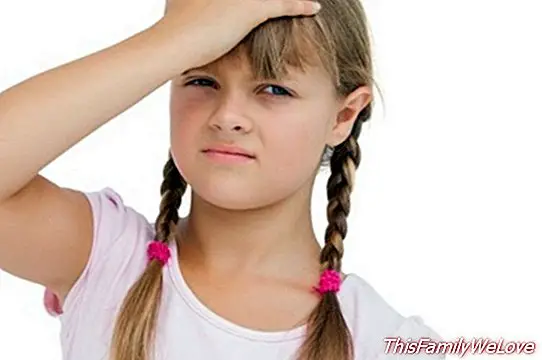Migraine in children appears at 2 years

Many children suffer from headaches, also known as headaches, but when they are strong and repetitive, they are identified as migraines. Only 20 percent of migraine children are diagnosed and, of these, very few receive specific treatment. The majority of migraine diagnoses in children occur between the ages of 6 and 10, but can occur before 2 years of age.
Migraine in children can continue until adulthood
Migraine is a recurrent, intense headache, usually unilateral, that can be accompanied by nausea and vomiting, and symptoms that affect vision can be preceded. Despite being a very intense pain and become incapacitating, does not endanger the health of those who suffer from it, but in the case of children it can have a significant negative impact on their quality of life, especially if we consider that it is considered a markedly underdiagnosed disease.
In a study on the incidence of migraine in children, it was found that only 20 percent of children suffering from migraine are diagnosed and that very few receive specific treatment. Prevalence increases with age, affecting approximately 5 to 25 percent of children and adolescents. Most diagnoses in children are made between the ages of 6 and 10, but it can occur even before 2 years of age and continue into adulthood.
Differences between childhood migraine and adult migraine
The symptoms of childhood migraine are sometimes similar to that of adults: a strong and recurrent headache. But, at other times, the pain is less evident or more difficult to deduce from the child's behavior, but we do appreciate a malaise that appears recurrently.
Although the symptoms may be the same as in adults, in general in childhood it is much more variable and difficult to identify. What distinguishes them?
1. Episodes are usually shorter that in adult migraine
2. Pain can be bilateral, whereas in the adult the pain is concentrated on only one side
3. Headache is usually accompanied by intestinal discomfort
4. Lack of appetite and activity in the earliest cases. It is possible, even, that the only alteration that parents appreciate is that the child stops playing and is unresponsive and with general malaise, reluctant to physical activity, and that happens with the same characteristics on a regular basis.
Migraine may have a hereditary character. The common thing is that in the same family there are several people affected by migraine and this can put us on the track. Given the suspicion of a picture of these characteristics, it is recommended to consult with the pediatrician or the neuropaediatrician.
Dr. Oriol Casals Rafecas.Headache Specialist at the Institute of Advanced Neurosciences Madrid -INEAMAD - Hospital Nuestra Señora del Rosario




